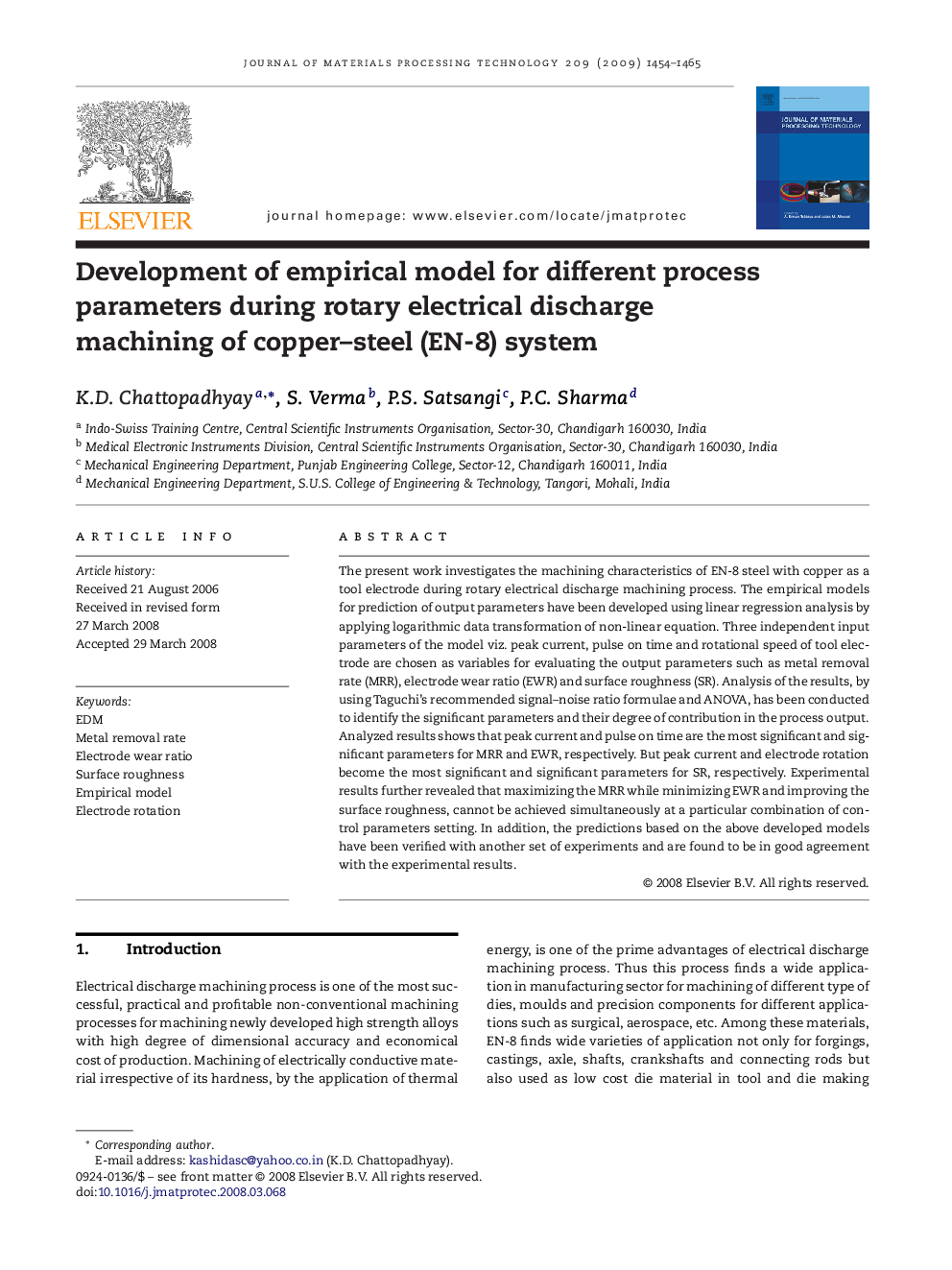| Article ID | Journal | Published Year | Pages | File Type |
|---|---|---|---|---|
| 791524 | Journal of Materials Processing Technology | 2009 | 12 Pages |
The present work investigates the machining characteristics of EN-8 steel with copper as a tool electrode during rotary electrical discharge machining process. The empirical models for prediction of output parameters have been developed using linear regression analysis by applying logarithmic data transformation of non-linear equation. Three independent input parameters of the model viz. peak current, pulse on time and rotational speed of tool electrode are chosen as variables for evaluating the output parameters such as metal removal rate (MRR), electrode wear ratio (EWR) and surface roughness (SR). Analysis of the results, by using Taguchi's recommended signal–noise ratio formulae and ANOVA, has been conducted to identify the significant parameters and their degree of contribution in the process output. Analyzed results shows that peak current and pulse on time are the most significant and significant parameters for MRR and EWR, respectively. But peak current and electrode rotation become the most significant and significant parameters for SR, respectively. Experimental results further revealed that maximizing the MRR while minimizing EWR and improving the surface roughness, cannot be achieved simultaneously at a particular combination of control parameters setting. In addition, the predictions based on the above developed models have been verified with another set of experiments and are found to be in good agreement with the experimental results.
